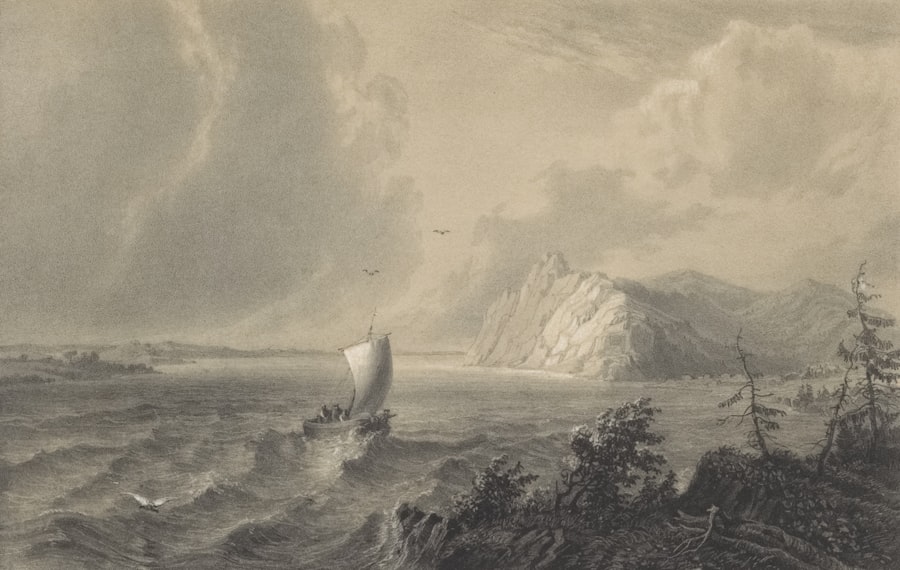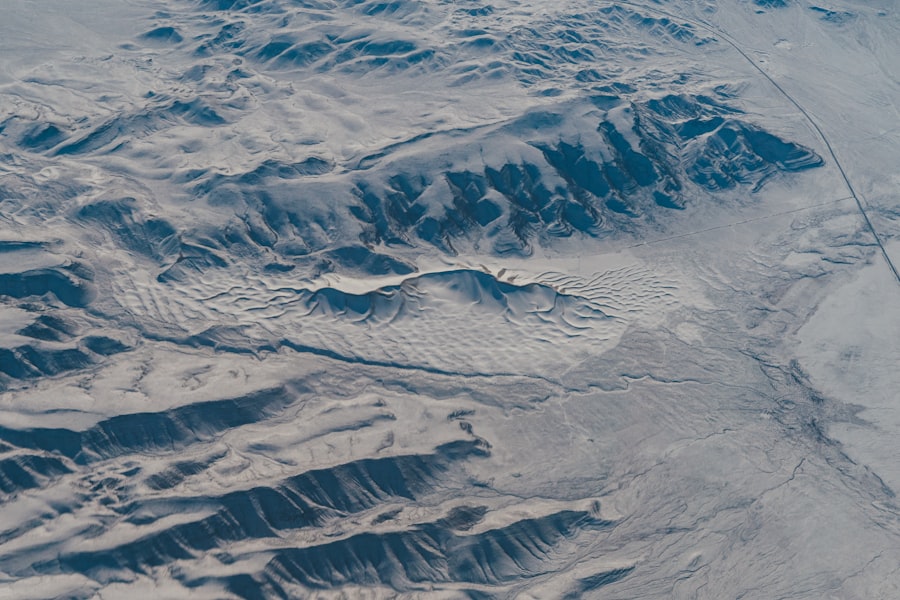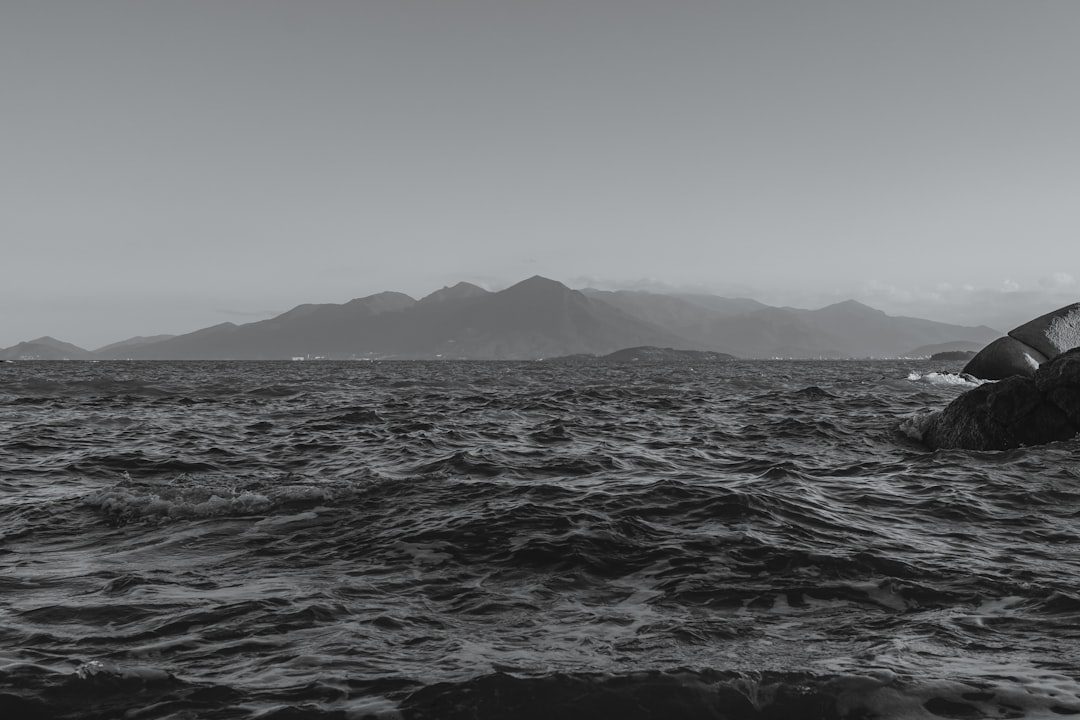Drake’s Passage, a body of water that separates South America from Antarctica, is renowned for its tumultuous seas and unpredictable weather. Stretching approximately 600 miles, this passage is often considered one of the most challenging maritime routes in the world. The waters are notorious for their strong currents and high winds, which can create waves that reach staggering heights.
For adventurers and travelers alike, crossing the Drake’s Passage is not merely a journey; it is an experience that tests the limits of human endurance and resilience.
Since then, it has become a rite of passage for those seeking to explore the pristine wilderness of Antarctica.
The unique geography of the region contributes to its fierce conditions, as the convergence of the Atlantic and Pacific Oceans creates a dynamic environment that can shift rapidly. Understanding these elements is crucial for anyone planning to traverse this formidable stretch of ocean.
Key Takeaways
- Drake’s Passage is a notoriously rough stretch of water between South America and Antarctica, known for its unpredictable and stormy conditions.
- When planning your journey through Drake’s Passage, consider the time of year, weather conditions, and the purpose of your trip.
- Choosing the right vessel for your journey is crucial, as it can greatly impact your comfort and safety during the crossing.
- Packing essentials for the trip should include warm and waterproof clothing, sea sickness medication, and other personal items for a comfortable journey.
- Preparing for rough seas involves familiarizing yourself with safety procedures, securing loose items, and mentally preparing for the challenging conditions.
Planning your journey
Planning a journey across Drake’s Passage requires careful consideration and preparation. Travelers must first decide on the best time to embark on their adventure. The peak season for Antarctic expeditions typically runs from late October to early March, when the weather is relatively milder and wildlife is more active.
During this period, travelers can expect longer daylight hours and a greater chance of spotting seals, whales, and various seabirds. In addition to timing, potential travelers should also research various tour operators that specialize in Antarctic voyages. Each operator offers different itineraries, vessel types, and onboard experiences.
It is essential to read reviews and gather information about safety records, crew expertise, and the overall quality of service. By doing thorough research, travelers can ensure they select an operator that aligns with their expectations and adventure goals.
Choosing the right vessel

Selecting the appropriate vessel for crossing Drake’s Passage is a critical aspect of the journey. Various types of ships are available, ranging from large cruise liners to smaller expedition vessels. Larger ships often provide more amenities and comfort but may lack the agility needed to navigate through rough waters effectively.
On the other hand, smaller vessels can offer a more intimate experience and greater access to remote areas but may come with fewer luxuries. Travelers should consider their personal preferences when choosing a vessel. Those who prioritize comfort may opt for a larger ship with spacious cabins and onboard entertainment options.
Conversely, adventurers seeking a more immersive experience might prefer a smaller expedition ship that allows for closer encounters with wildlife and more opportunities for land excursions. Ultimately, the choice of vessel can significantly impact the overall experience of crossing Drake’s Passage.
Packing essentials for the trip
| Item | Quantity | Importance |
|---|---|---|
| Clothing | 3 sets | High |
| Toiletries | 1 set | High |
| Medications | As needed | High |
| Travel documents | 1 set | High |
| Portable charger | 1 | Medium |
Packing for a journey across Drake’s Passage requires careful thought and consideration of the unique conditions travelers will encounter. The weather can be highly variable, so layering clothing is essential. Travelers should pack moisture-wicking base layers, insulating mid-layers, and waterproof outer layers to stay warm and dry during their voyage.
Accessories such as hats, gloves, and scarves are also crucial for protection against the biting winds. In addition to clothing, travelers should consider bringing essential gear such as binoculars for wildlife watching, a camera to capture breathtaking landscapes, and personal items like sunscreen and lip balm to protect against sun exposure at high altitudes. A good pair of waterproof boots is also advisable for excursions on land, where wet conditions may prevail.
By packing thoughtfully, travelers can ensure they are well-prepared for the diverse experiences that await them on their journey.
Preparing for rough seas
Crossing Drake’s Passage is synonymous with rough seas, and preparation is key to ensuring a safe and enjoyable experience. Travelers should familiarize themselves with the potential conditions they may face during their crossing. It is not uncommon for waves to reach heights of 30 feet or more, so understanding how to navigate these challenges mentally and physically is essential.
One effective way to prepare for rough seas is to engage in pre-trip training or exercises that focus on balance and core strength. This can help travelers feel more stable on their feet while onboard. Additionally, it is wise to consult with medical professionals about potential medications or remedies for seasickness before embarking on the journey.
Being mentally prepared for the possibility of rough waters can help travelers maintain a positive attitude throughout their crossing.
Navigating wildlife encounters

One of the most thrilling aspects of crossing Drake’s Passage is the opportunity to encounter diverse wildlife in their natural habitats. The waters are teeming with life, including various species of whales, seals, and seabirds. Travelers should be prepared for these encounters by familiarizing themselves with the types of wildlife they may see during their journey.
When spotting wildlife, it is important to remain respectful and maintain a safe distance. Many tour operators provide guidelines on how to interact with animals responsibly while ensuring their safety and well-being. Travelers should also have their cameras ready to capture these unforgettable moments but should prioritize observing rather than intruding on the animals’ natural behaviors.
By embracing this mindset, travelers can enhance their appreciation for the incredible biodiversity that thrives in this remote region.
Staying safe during the crossing
Safety should always be a top priority when crossing Drake’s Passage. Travelers must adhere to all safety protocols established by their tour operators and crew members. This includes attending safety briefings upon boarding the vessel and familiarizing themselves with emergency procedures in case of unexpected situations.
Additionally, travelers should be aware of their surroundings at all times while onboard. This includes being cautious when moving around the ship during rough seas and using handrails whenever possible. Wearing appropriate footwear can also help prevent slips and falls on wet surfaces.
By remaining vigilant and following safety guidelines, travelers can significantly reduce risks during their crossing.
Managing seasickness
Seasickness is a common concern for many travelers embarking on a journey across Drake’s Passage. The unpredictable nature of the waters can lead to discomfort for even seasoned sailors. To manage seasickness effectively, travelers should consider several strategies before and during their voyage.
One effective approach is to choose accommodations in the middle of the ship, where motion tends to be less pronounced compared to cabins located at the bow or stern. Additionally, staying hydrated and consuming light meals can help mitigate symptoms. Many travelers find relief through over-the-counter medications or natural remedies such as ginger or acupressure bands.
By being proactive about managing seasickness, travelers can enhance their overall experience during the crossing.
Making the most of the journey
Crossing Drake’s Passage offers more than just a means to reach Antarctica; it presents an opportunity for personal growth and reflection. Travelers should embrace every moment of their journey by engaging with fellow passengers and crew members, sharing stories and experiences that enrich their adventure. Participating in onboard activities such as lectures or workshops can also enhance the experience by providing valuable insights into the region’s history, ecology, and culture.
Taking time to enjoy the breathtaking views from deck or participating in group excursions can create lasting memories that extend beyond the crossing itself. By fully immersing themselves in every aspect of the journey, travelers can create a meaningful connection with this remarkable part of the world.
Arriving at your destination
Upon successfully crossing Drake’s Passage, travelers will find themselves at the doorstep of Antarctica—a land characterized by stunning landscapes and unparalleled beauty. The first sighting of icebergs or snow-capped mountains serves as a powerful reminder of the journey undertaken to reach this remote destination. Once ashore, travelers will have the opportunity to explore various sites rich in history and natural wonders.
Guided excursions may include visits to research stations or wildlife colonies where visitors can observe penguins in their natural habitat. Each moment spent in Antarctica offers a chance to appreciate its pristine environment while fostering a deeper understanding of global conservation efforts.
Reflecting on the experience
As travelers conclude their journey across Drake’s Passage and into Antarctica, it is essential to take time for reflection. The experience often leaves a profound impact on individuals, prompting them to consider their relationship with nature and their role in preserving such fragile ecosystems. Sharing stories with fellow travelers can also enhance this reflective process, allowing individuals to connect over shared experiences and insights gained during their adventure.
Whether it’s through journaling or discussing memories with friends back home, taking time to process this extraordinary journey can lead to lasting personal growth and a renewed appreciation for the wonders of our planet. Ultimately, crossing Drake’s Passage becomes not just a physical journey but an emotional one that resonates long after returning home.
The Drake Passage, a notorious stretch of water between the southern tip of South America and Antarctica, is known for its challenging conditions and significant role in global ocean circulation. For those interested in exploring the geographical and historical aspects of this treacherous route, a related article can be found on MyGeoQuest. This article delves into the unique features and challenges of navigating the Drake Passage, providing insights into its impact on maritime travel and climate. To learn more, you can read the full article by visiting this link.
WATCH NOW! Drake Passage: Earth’s Deadliest Waters Revealed
FAQs
What is the distance across Drake’s Passage?
The distance across Drake’s Passage, which separates South America from Antarctica, is approximately 800 kilometers (500 miles).
Why is Drake’s Passage significant?
Drake’s Passage is significant because it is one of the most treacherous and unpredictable bodies of water in the world, known for its strong winds, large waves, and challenging sailing conditions.
How long does it take to cross Drake’s Passage?
The time it takes to cross Drake’s Passage can vary depending on weather conditions and the type of vessel, but it typically takes around 2-3 days for a ship to traverse the distance.
What is the best time of year to cross Drake’s Passage?
The best time to cross Drake’s Passage is during the austral summer (November to March) when the weather is relatively milder and the sea conditions are more favorable for sailing.
Are there any dangers associated with crossing Drake’s Passage?
Yes, crossing Drake’s Passage can be dangerous due to the unpredictable weather, strong winds, and rough seas. It is known for its challenging sailing conditions and has earned a reputation as one of the roughest stretches of water in the world.
